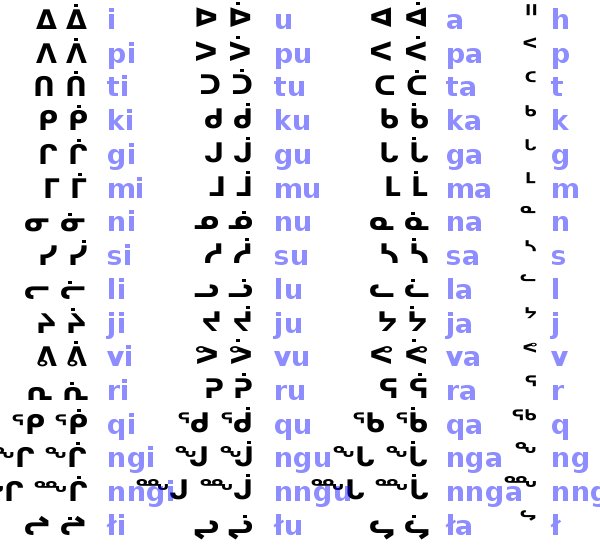171. Shared Space Create Shared Learning
Players having overlapping goals or mechanics is SUPER USEFUL during learning phases. They can teach one another/learn from one another.
172. For Rachel
Put a gay robot in, just ‘cos.
173. Alphabets Are Not Everybets
Look up the language form known as Abugida, like Inuktitut:

When you design codes and hidden information there’s a powerful urge to use the basic structure of the language you already know. This is why aliens in most games still have decimal number systems despite having like, six fingers or whatever. Not only is Inuktitut totally sweet but it’s a way of concealing language that will broaden most players’ worldviews as they learn it.
174. Remember Card Real Estate
Cards can flip over and rotate, giving them potentially 8 states you can track easily. MTG’s werewolves handle transforming cards SUPER DUPER WELL, and Fury of Dracula’s decks use their cardbacks well too.
175. Noob Effects
If you want to design ‘magic the gathering, but without manascrew’ look up those who came before you and failed: The WoW CCG and VS. Both games were designed by MTG pros to try and reduce ‘noob effects’ and ‘be more skill rewarding.’ Turns out that’s actually kinda a bad system for getting new players into your game
176. Experiments In Learning – Dirt
Make a game by drawing on the dirt with a stick. There are at least two well known games that can play this way. Work with little.
177. Replacing Variables Changes Games
Battleship is basically a bingo variant. It replaces a random variable with a player working off hidden information.
178. Don’t Relinquish Limits Easily
Resource systems are a way to control players. So be super careful with anything that circumvents that resource system
Necropotence,
179. Creepiness
IT IS SO EASY TO DESIGN YOUR GAME THAT ENABLES PEOPLE TO BE CREEPY! Hidden information games particularly! Don’t do this! try to make sure your rules are NICE AND CLEAR about DON’T BE CREEPY at people! Think about the kind of questions and interactions your game entices people to have. Creepy is Always Bad, okay?
180. Examine Game Parts
Conventional d6es have each opposing face add up to 7. You can design around ‘the missing face’ of a dice with this information. This also means that the range of the total numbers on a rolled dice is 15-20, which is pleasantly round.